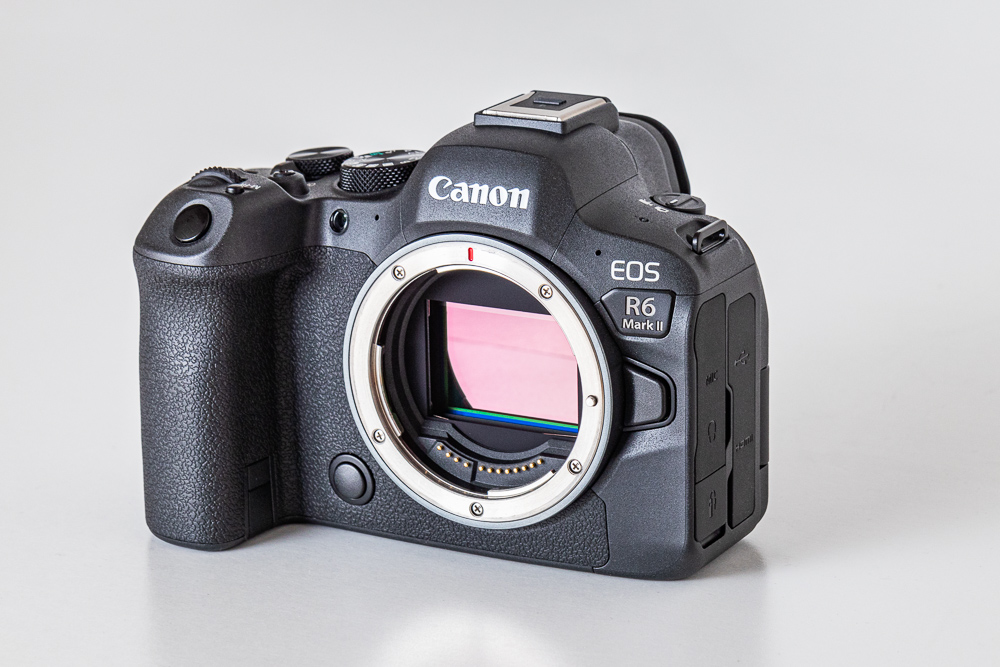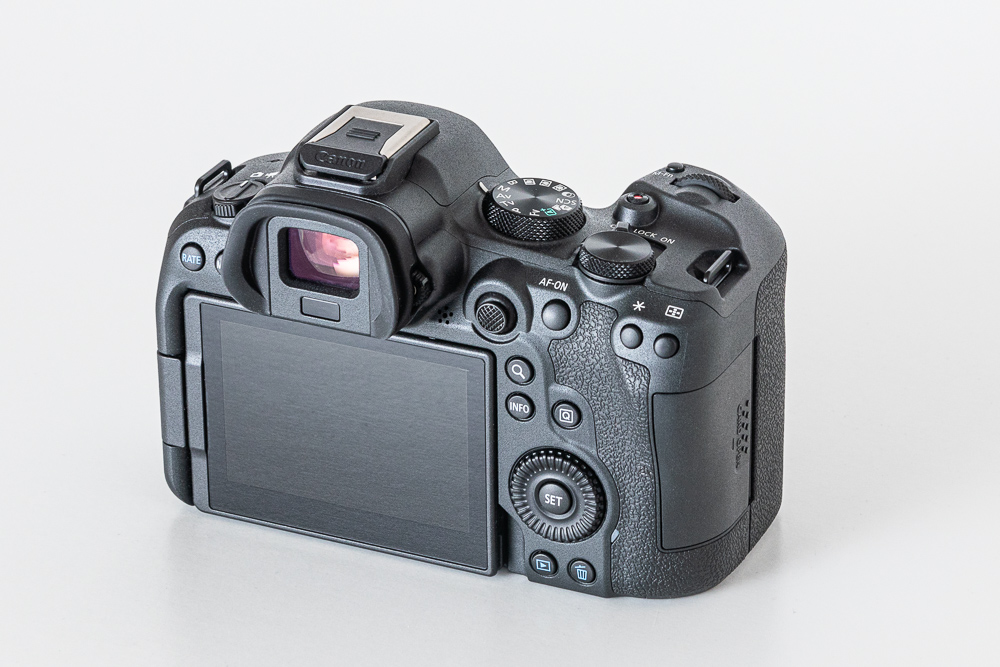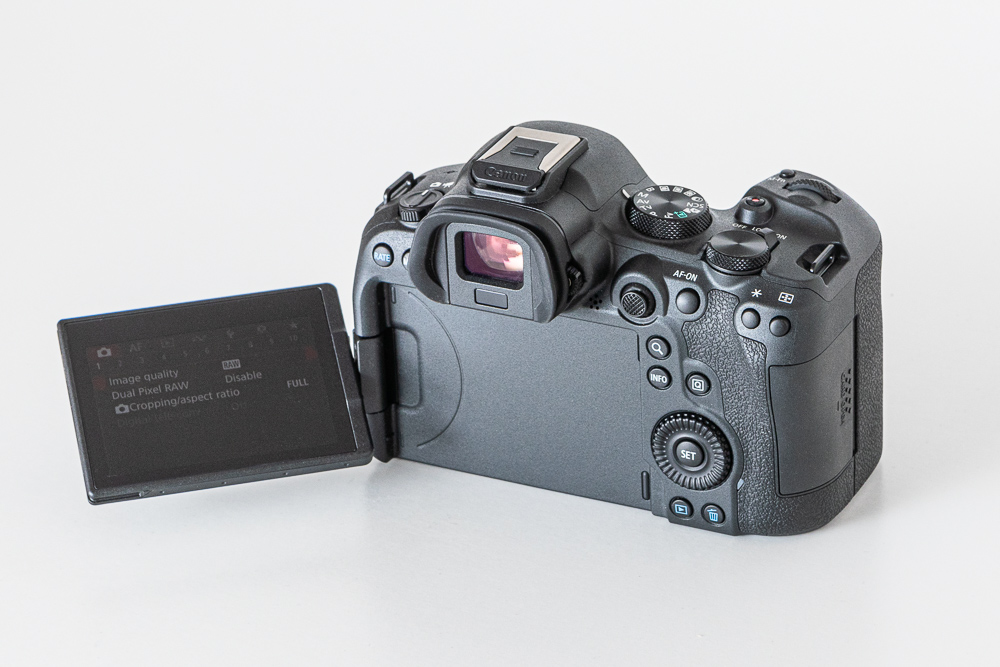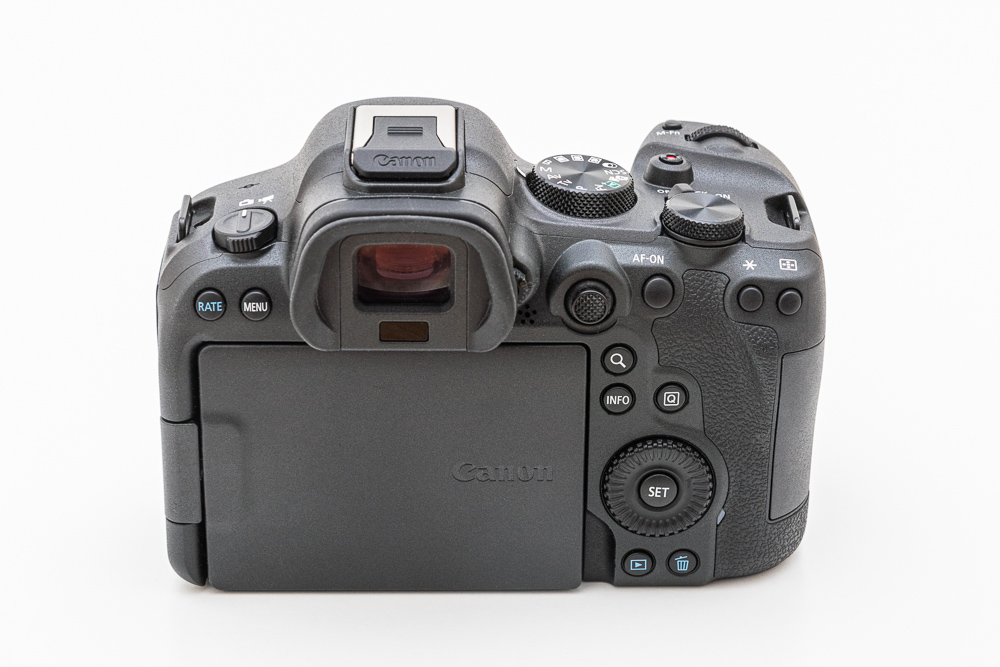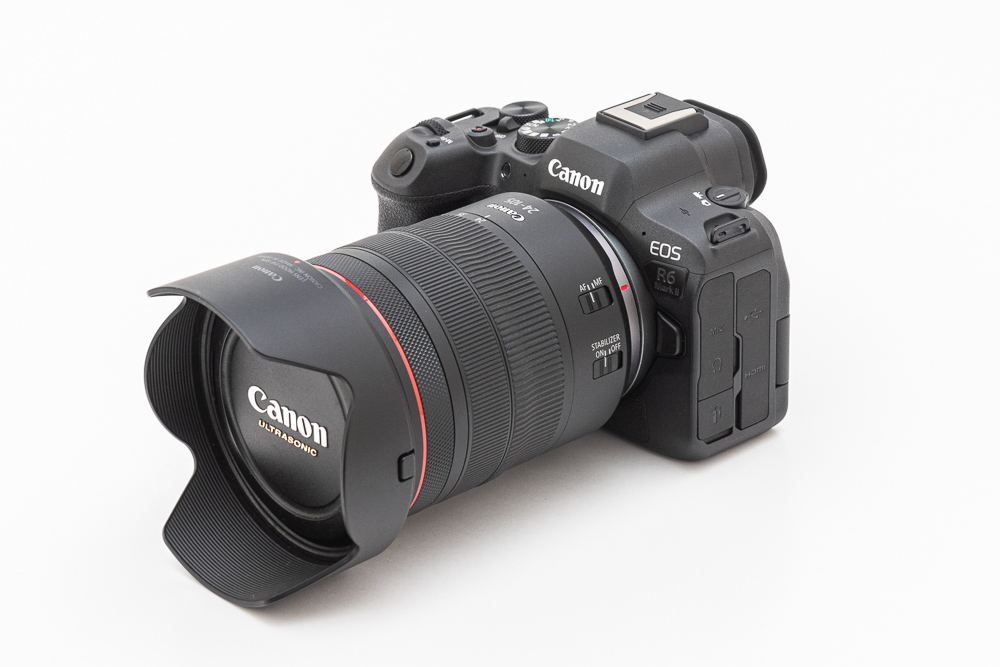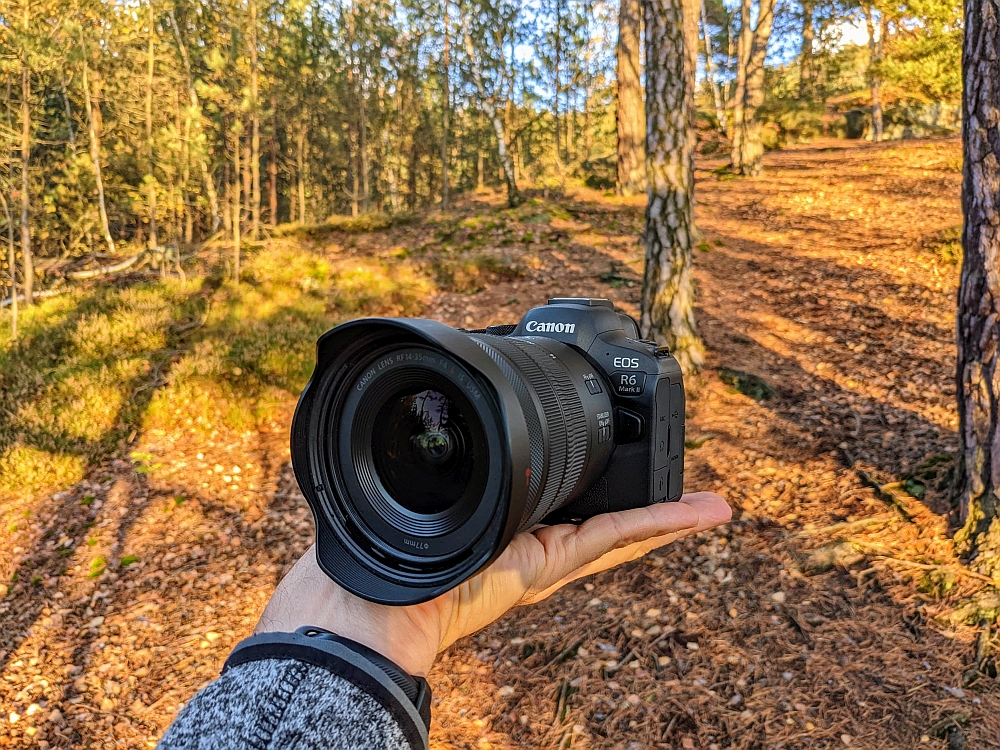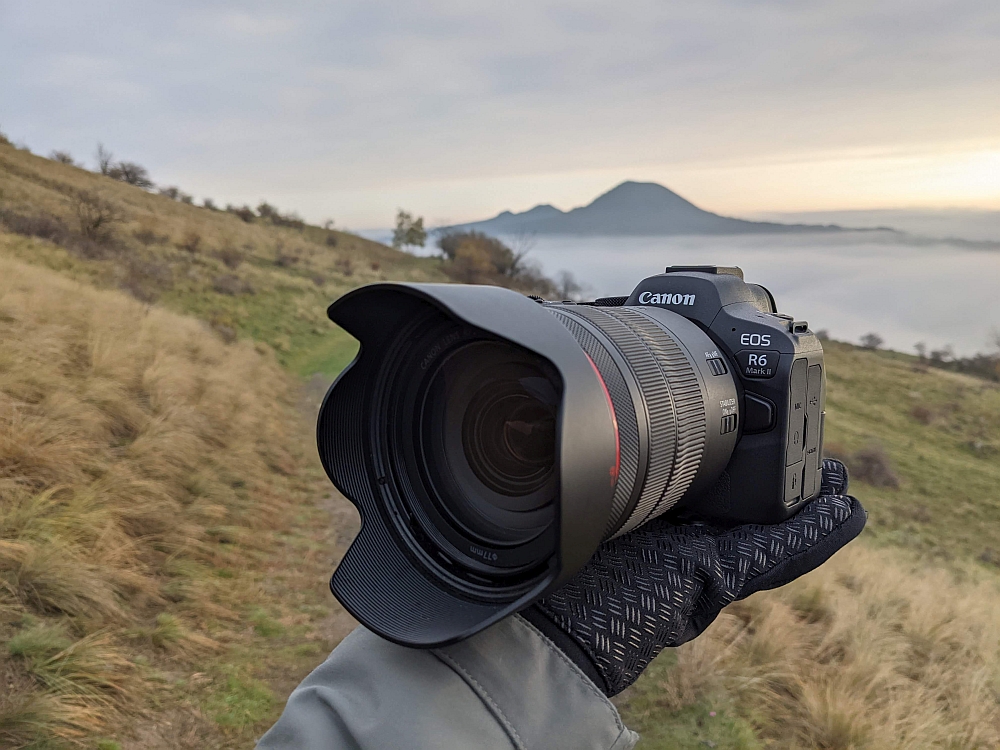Canon EOS R6 Mark II
In early November, Canon introduced the successor to the very popular EOS R6 mirrorless camera, the EOS R6 Mark II. At first glance, the two cameras seem almost identical. But there are slight differences. There are, of course, more changes on the inside. Canon states in the official release that there have been 70 improvements in total.
Changes on the outside
The on/off button has been moved from the left side to below the rotary dial on the right side, freeing up space for the photo/video mode switch. It will take some time to get used to the different location of the off button. Even after a few days I occasionally switched the camera mode to video instead of shutting it off. The new location of the power button allows you to conveniently turn off the device with one hand.
Another minor change is the shape of the joystick. It is not completely noticeable at first glance, but you will notice the different shape when you first use it. In the first R6 the top surface was concave, i.e. curved inwards, in the R6 Mark II it is convex, i.e. curved outwards. In use I have not noticed any problem, the joystick is still comfortable to use, its sensitivity can be adjusted in the menu as with its predecessor.
The last change is the new "hotshoe", i.e. the place where the flash connects. This is the same type as on the EOS R3. The rest of the body is the same, the 2 slots for UHS-II SD cards have remained, so the ergonomics and comfort of operation remain top notch, as we are used to with Canon. And since the body, apart from minor differences, is essentially identical to its predecessor, the same battery grip can be used without any problem. The viewfinder and display parameters have also remained the same.
Changes inside
The bigger changes have occurred inside, of course. The R6 Mark II has been given a new sensor with an effective resolution of 24 megapixels (6000x4000), it is equipped with a newer processor with the same name Digic X, it can handle 12 frames per second with mechanical shutter and up to 40 frames per second with electronic shutter. It has an improved Dual Pixel CMOS AF II with -6.5EV sensitivity that can learn. Compared to the R5/R6, it can recognize different animals (horses, zebras, birds, etc), vehicle types (trains, planes, cars, etc) and can set eye preference, i.e. which eye to focus on. Stabilization is like the first generation up to 8EV depending on the lens used.
An interesting novelty introduced in the EOS R7 is the so-called Pre-Shooting, a function that allows recording the moment before the actual pressing of the shutter. This is 0.5 seconds in shooting (approx. 15 frames) and optionally 3 or 5 seconds in movie mode. When shooting video, you can set how the AF system should behave when the subject disappears from the scene, i.e. if it should look for the subject or stay where the subject left the scene.
I will also briefly mention video, although I am very marginal on it. The sensor now allows 4K at 60fps without crop, or 1080p at 180fps, and there´s no longer a limit on recording length. An interesting feature is also a correction called Lens Breathing. Thanks to the new sensor, the occurrence of rolling shutter is minimized.
In the wireless connectivity, 5GHz frequency has been added and overall Bluetooth and WiFi connectivity has been simplified.
The camera uses the same battery as the R5 and R6, but the battery life has been greatly improved. According to CIPA´s methodology, it is 50 to 60%, 580 shots when using the rear LCD, and up to 760 shots when set to save battery. In reality, I far exceeded both numbers.
Although it doesn´t seem like it, especially from the outside, the second generation EOS R6 mirrorless camera is a noticeable improvement on an already excellent camera. Be it with a more advanced AF system, a greater focus on video or last but not least a higher resolution sensor.
